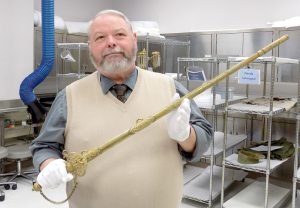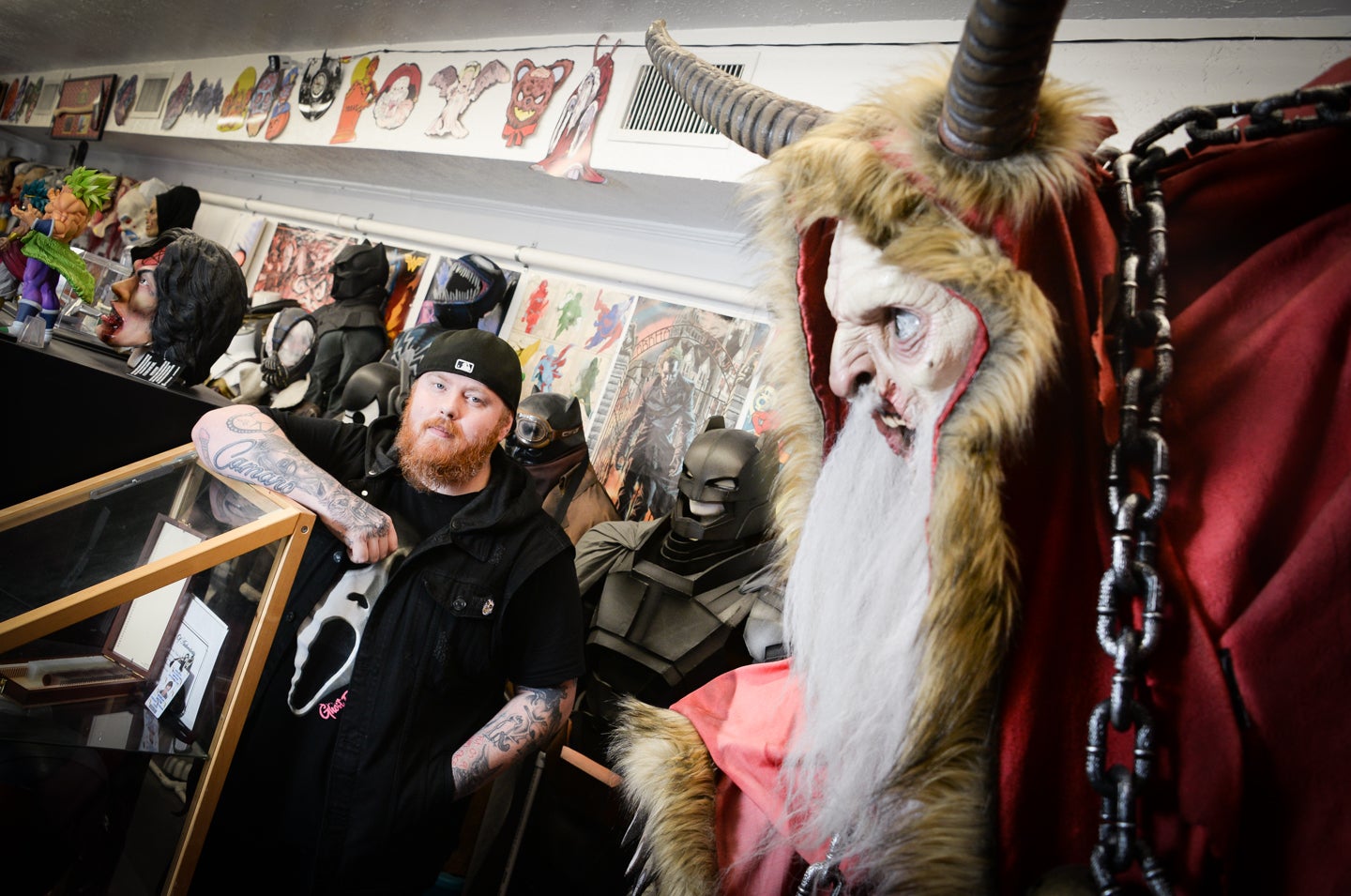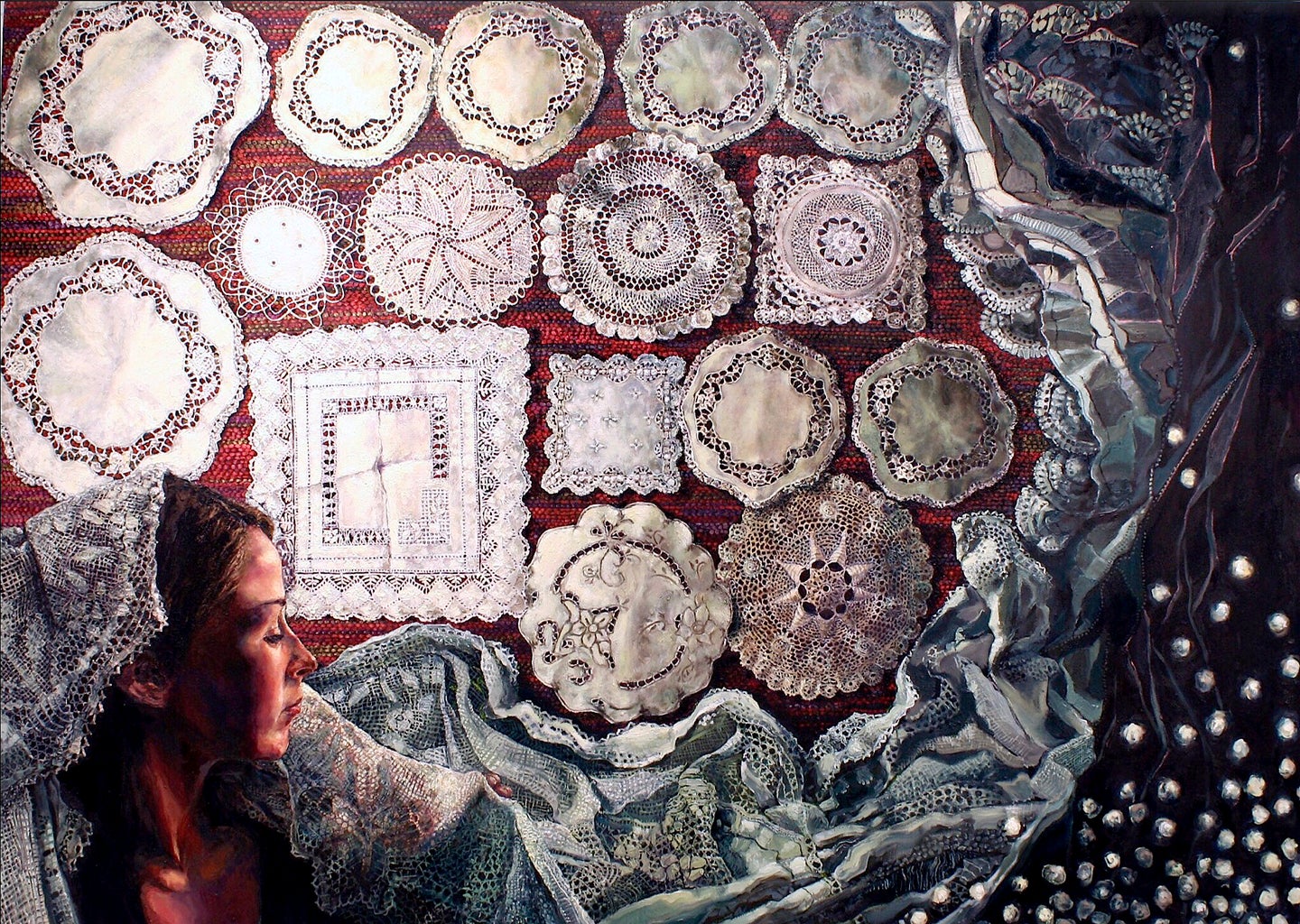By Stuart W. Sanders,
Kentucky National Guard historian John Trowbridge is tenacious when it comes to research.
During a career spent commemorating and interpreting the Bluegrass State’s military history, Trowbridge has found forgotten burial sites and uncovered long-ignored stories from Kentucky’s martial past.
Now, thanks to his efforts, two important 19th century artifacts have found a home at the Kentucky Historical Society (KHS) in Frankfort.
While writing a blog post about the Battle of Buena Vista, fought during the Mexican-American War, Trowbridge began researching William F. Gaines, a teenage soldier from Scott County. Multiple times during the battle, Gaines saved the flag of the 2nd Kentucky Infantry Regiment from falling into enemy hands. It earned him the nickname the “Boy Defender of Kentucky’s Honor.”
“During the fight, the Kentuckians and the Mexicans were toe to toe in the battle,” Trowbridge said. “Twice, Mexican lancers took the colors of the 2nd Kentucky away from Gaines. Luckily, they didn’t kill him, because he turned around and killed the Mexicans and recaptured the flag each time.” He may have also seized a Mexican battle flag during the action, Trowbridge added.
To thank Gaines for his youthful heroism (he was 16 years old at the time), in 1851 the Kentucky legislature presented him with a gilded sword engraved with scrollwork, drums, eagles and banners. It was inscribed, “Presented by the State of Kentucky to Sgt. William F. Gaines, the Boy Defender of the glorious banner of Kentucky, in the sanguinary battle of Buena Vista.”
W.H. Horstmann and Sons of Philadelphia manufactured the sword, which was, Trowbridge said, “a prominent military supplier that was a top-notch outfit at that time.” The state, it appeared, spared few expenses in honoring the “Boy Defender.”
Gaines eventually moved to Mississippi, where he became a business owner and served in the state militia. During the Civil War, he and his family endured the siege of Vicksburg. Gaines fell ill around that time and returned to Kentucky to recover. He died at his parents’ home in Georgetown in August 1863. Although some reports said he was buried in the Georgetown cemetery, his final resting place is unknown.
When Trowbridge began researching Gaines, he dug into military records, official reports, government documents and period newspaper accounts. As he engaged in the historical process, he also conducted genealogical research.

John Trowbridge displays the Gaines sword in the Kentucky History Center lab. (Photo by Keith G. Jackson)
Little did he know that this would help bring two important family heirlooms to Kentucky.
Trowbridge discovered that the widow of Gaines’s great-grandson lived on the West Coast. One day, Trowbridge called her to ask some questions about the family history.
When Trowbridge described Gaines’s heroism, she casually mentioned that Gaines’s sword and portrait were hanging over her fireplace.
“I was shocked,” Trowbridge said.
Amazingly, after nearly 170 years, the sword was still in family hands. Trowbridge said that he was equally impressed that the Gaines’s portrait existed, which was likely painted in Vicksburg in 1858.
Having previously worked for the Kentucky Historical Society for nearly 10 years, Trowbridge realized that KHS would be the perfect home for Gaines’s sword and portrait. After asking her if she might be willing to donate the items, she agreed.
“She said that her husband would have loved for the sword and portrait to go to KHS,” Trowbridge said. Because the agency already has the flag of the 2nd Kentucky in its collection, Trowbridge said that “it’s important for the society to have these artifacts.”
Thanks to Trowbridge’s dogged research and the generosity of the donor, KHS now has three artifacts related to Gaines: the flag he protected during the Battle of Buena Vista, the sword and his portrait. This collection allows KHS to tell a more complete story about Kentucky’s role during the Mexican-American War and reveals how the state government honored soldiers during the 19th century.
KHS curator Bill Bright understands the value of these items. “Pieces like these are true Kentucky treasures,” Bright said. “To have them home again helps us tell a broader story, enabling KHS to educate and inspire further generations.”
Stuart W. Sanders is the Kentucky Historical Society’s history advocate. To see digitized images of artifacts in KHS’s collection, visit the Society’s website at www.history.ky.gov.










